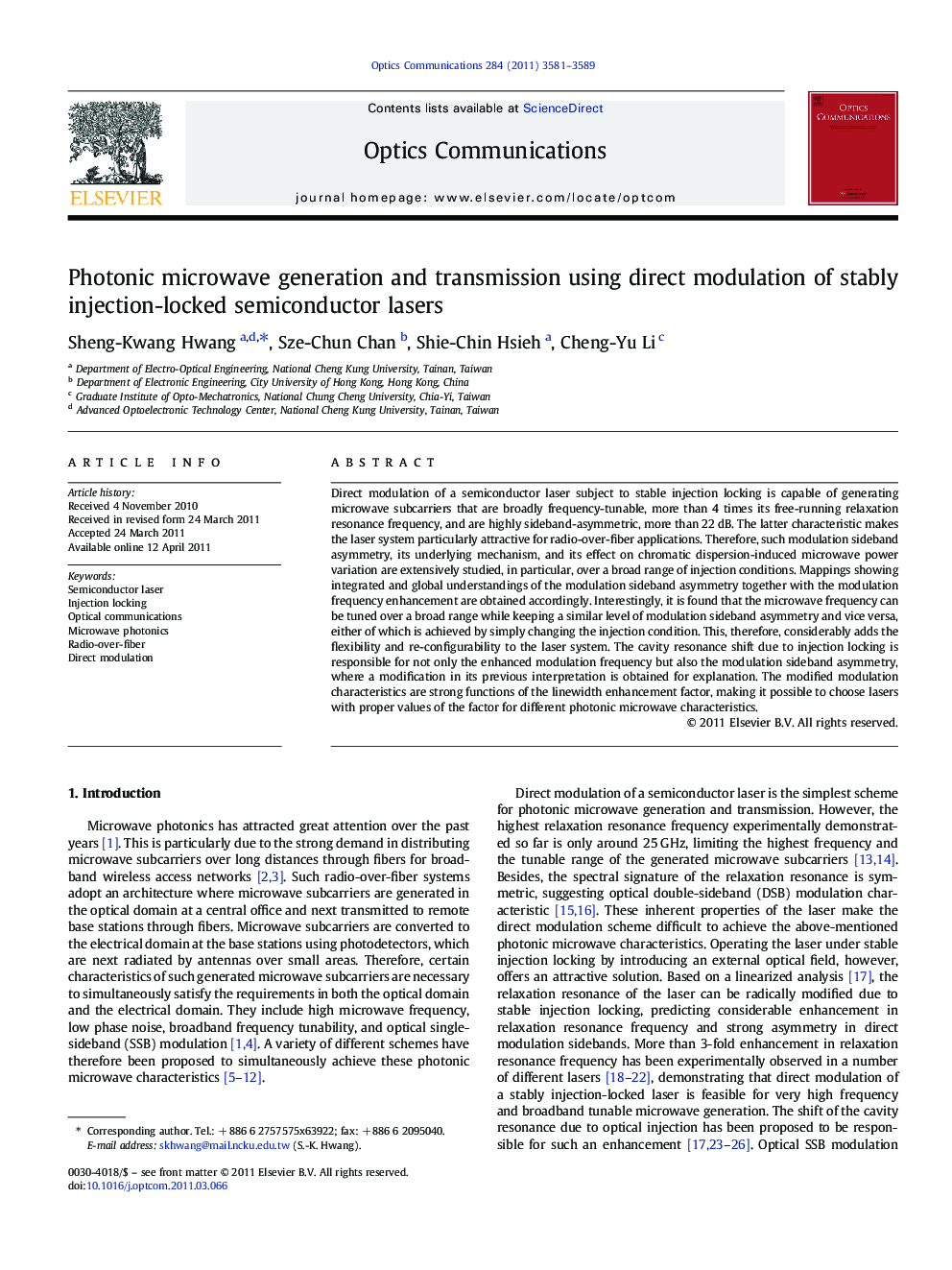| Article ID | Journal | Published Year | Pages | File Type |
|---|---|---|---|---|
| 1537529 | Optics Communications | 2011 | 9 Pages |
Direct modulation of a semiconductor laser subject to stable injection locking is capable of generating microwave subcarriers that are broadly frequency-tunable, more than 4 times its free-running relaxation resonance frequency, and are highly sideband-asymmetric, more than 22 dB. The latter characteristic makes the laser system particularly attractive for radio-over-fiber applications. Therefore, such modulation sideband asymmetry, its underlying mechanism, and its effect on chromatic dispersion-induced microwave power variation are extensively studied, in particular, over a broad range of injection conditions. Mappings showing integrated and global understandings of the modulation sideband asymmetry together with the modulation frequency enhancement are obtained accordingly. Interestingly, it is found that the microwave frequency can be tuned over a broad range while keeping a similar level of modulation sideband asymmetry and vice versa, either of which is achieved by simply changing the injection condition. This, therefore, considerably adds the flexibility and re-configurability to the laser system. The cavity resonance shift due to injection locking is responsible for not only the enhanced modulation frequency but also the modulation sideband asymmetry, where a modification in its previous interpretation is obtained for explanation. The modified modulation characteristics are strong functions of the linewidth enhancement factor, making it possible to choose lasers with proper values of the factor for different photonic microwave characteristics.
Research highlights► Injection locking radically modifies relaxation resonance of semiconductor lasers. ► Direct modulation characteristics of such lasers are therefore greatly modified. ► Integrated and global understandings of modified characteristics are obtained. ► Cavity resonance red-shift is responsible for modified modulation characteristics. ► Modified characteristics are strong functions of the linewidth enhancement factor.
